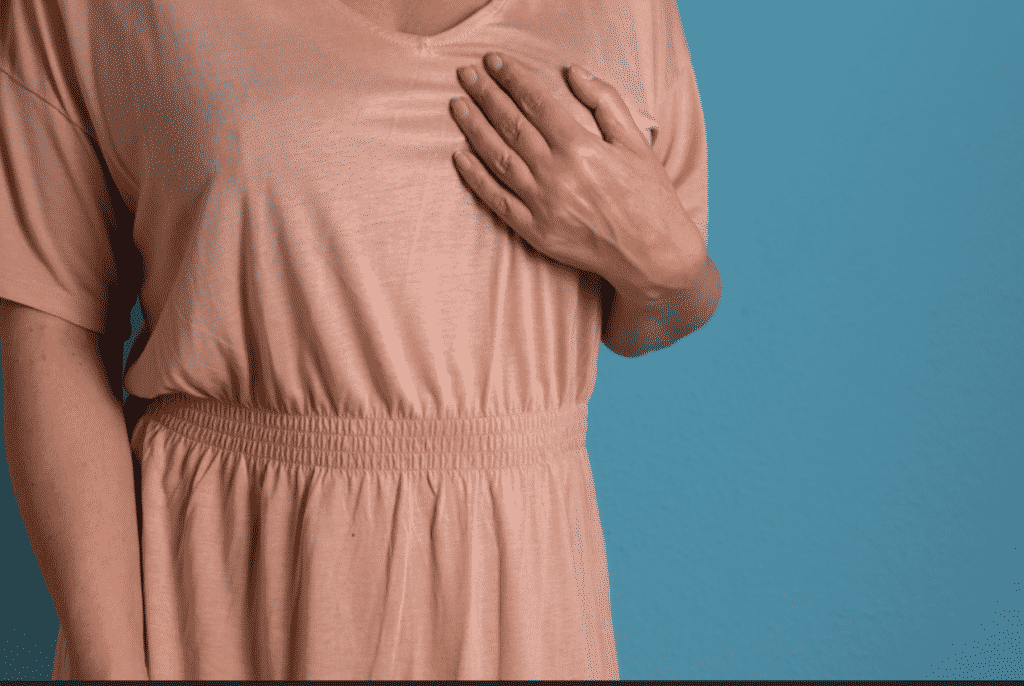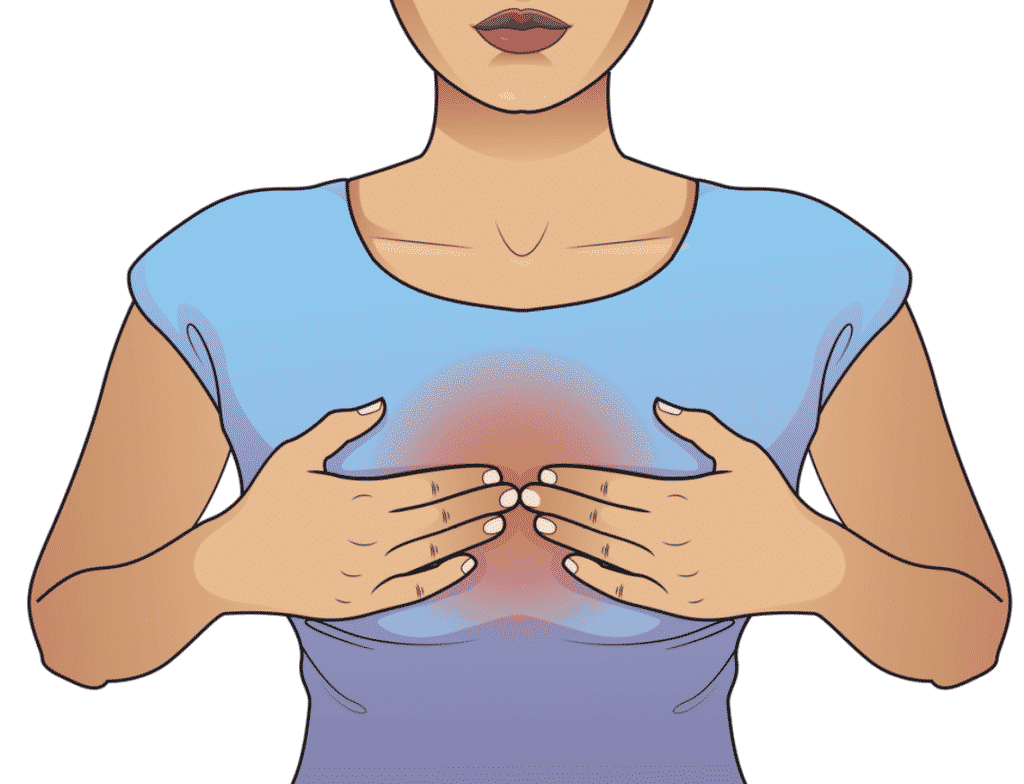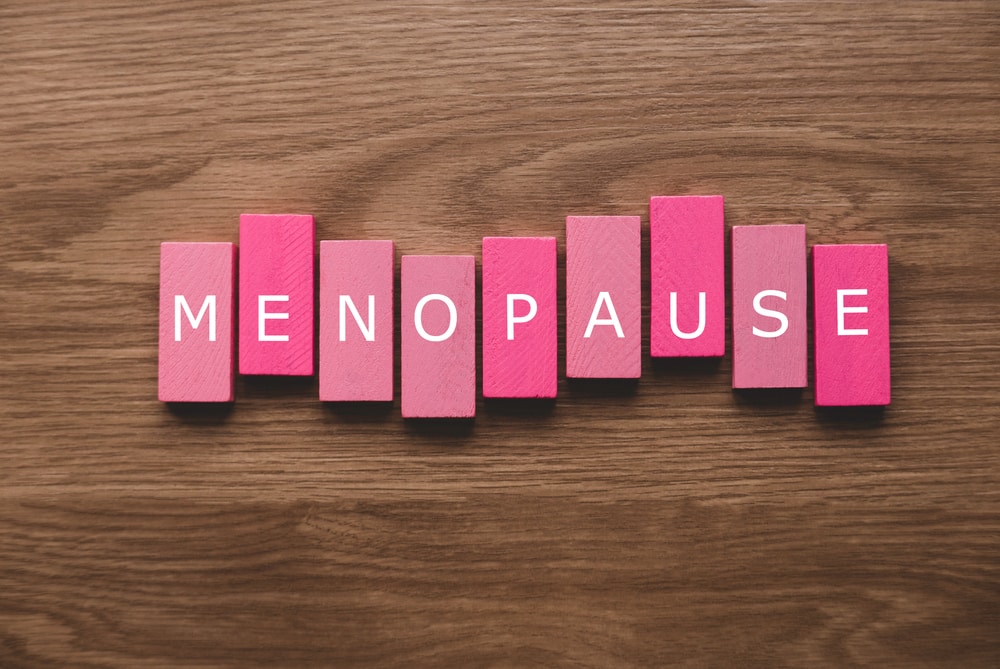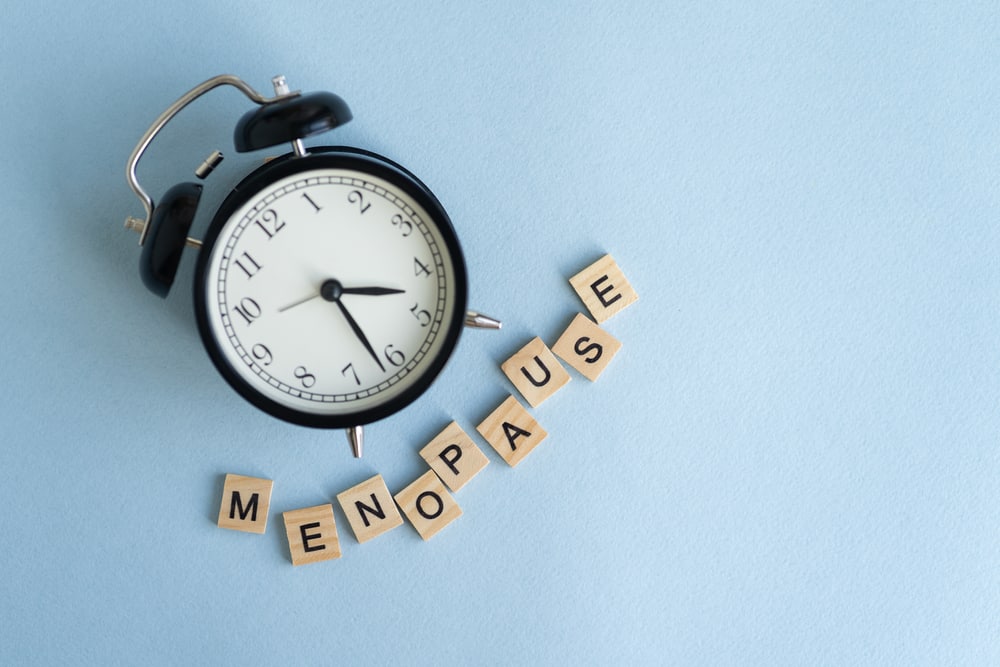Regardless of age, most women can relate to what it feels like to have sore or tender breasts. In fact, studies show that about 70% of women have experienced breast pain at least once in their lifetime. Ranging from hormonal fluctuations or changes to underlying health conditions, there are many reasons why a woman may have breast pain. Interestingly, there’s even a link between menopause and breast tenderness.

Breast pain or “mastalgia” is a common condition in women, especially during their reproductive years. However, breast pain may continue after menopause (a period whereby a woman has stopped having her menstrual cycle).
This post gives an overview of the link between menopause and breast tenderness, as well as how to take care of it.
What Are The Types of Breast Pain?
There are two basic types of breast pain namely:
1. Cyclic breast pain(mastalgia)
This type of breast pain is associated with your period or menstrual cycle. It is the most common type and accounts for up to 75% of all breast pain in women. Hormonal changes that accompany puberty, menstrual period, pregnancy, and perimenopause is responsible for this pain. Cyclic breast pain typically stops after menopause and is not a symptom of any health condition.

The most notable symptoms of cyclic mastalgia are: generalized breast pain (which increases as menstruation approaches), swelling, lumpiness, and soreness of the breasts.
2. Non-cyclical breast pain(mastalgia):
On the other hand, this type of breast pain is not associated with hormonal changes and is most likely an indicator of an underlying problem. If you are past menopause and you are experiencing breast pain, the pain is said to be non-cyclical.
Usually, in non-cyclical breast pain, the pain is specific to a particular area of the breast. Non-cyclical pain is typically a pointer to health problems like cysts in the breast, trauma, benign tumor, and conditions affecting the chest wall.
What Are The Symptoms of Breast Pain?
Symptoms of breast soreness will differ depending on the type of breast pain you are suffering from.
With cyclical breast pain, your breasts will likely feel tender, swollen, lumpy and sore.
In non-cyclical breast pain, the symptoms are a little different. Usually, you will feel the following in your breast:
- A sharper, more acute pain that occurs intermittently
- The pain is usually restricted to a specific area of the breast
- A burning sensation in the affected area
Breast Pain After Menopause, Should I Be Worried?
As you grow older, the hormones responsible for your menstrual cycle start to decrease and finally, your period stops at menopause. Menopause however isn’t a sudden stop. It is a gradual life event preceded by changes and fluctuations in your hormone levels. During this period of hormonal fluctuation, your cycle becomes more irregular and this period is referred to as perimenopause.

You are considered to have reached menopause if only you haven’t had a period in 12 months. During this period, you may experience symptoms like hot flashes, fever, dizziness, and sore breasts amongst others. Just like fibroids after menopause, breast pain associated with the onset of menopause is not strange. In fact, this breast pain is not usually considered a problem and will resolve post-menopause.
On the other hand, if you have persisting breast pain after menopause, then it may be a sign of a health problem. You should visit your doctor to discuss your symptoms and make a proper diagnosis.
Possible Causes of Breast Pain After Menopause
Fluctuation in hormone levels is the primary cause of breast pain in women during pre-menopause, perimenopause, and menopause. Breast pain should normally improve and eventually go away once you are past menopause. In non-cyclical breast pain, breast soreness is not due to hormonal changes and occurs after menopause.

Here are the risk factors for breast pain after menopause:
- Presence of benign non-cancerous lumps in the breast
- Large breasts
- Wearing a poorly sized bra or bras with underwires
- Breast infections
- Hormone therapy treatment for menopause
- Trauma to the breast
- Referred pain (pain felt in the breast but is coming from another part of the body)
- Scar tissue from breast implants
Certain lifestle practices also lead to breast pain in women. These include:
- Smoking
- Stress
- Caffeine consumption.
In rare cases, breast pain can be a symptom of breast cancer. It is however worthy to note that most breast pain is not associated with cancer. If the only symptom is breast pain, then it is less likely that breast cancer is the underlying problem. See your doctor to evaluate your symptoms and give a proper diagnosis if you notice any of these accompanying symptoms:
- Fever
- Breast lumps
- Rashes
- Changes to the shape and size of breasts
- Nipple discharge
- Changes in the nipple such as an inverted nipple
- Dimpled skin on breasts.
Treatment For Breast Pain After Menopause
Breast pain before menopause does not require treatment. The pain will go away depending on the phase you are in your menstrual cycle.
For breast pain after menopause, your doctor will have to design a treatment plan specific to you according to the diagnosis made.
In the meantime, there are a few things to try out in order to ease the pain or reduce the risk of having breast pain post-menopause.
- Consider wearing a supportive sports bra
- Avoid bras with underwires
- Use over-the-counter pain reliefs like acetaminophen or ibuprofen
- Reduce smoking and caffeine intake
- Try placing a cool or warm compress on your breasts
- Evening primrose oil
Conclusion
Breast pain is a condition common to all women regardless of age. If you are experiencing breast pain, don’t panic, it will eventually go away. Most breast pain isn’t a sign of a health condition. However, you should consult your doctor if the pain is persistent and you develop other symptoms. Otherwise, you can manage the symptoms with simple self-care and lifestyle practices.

